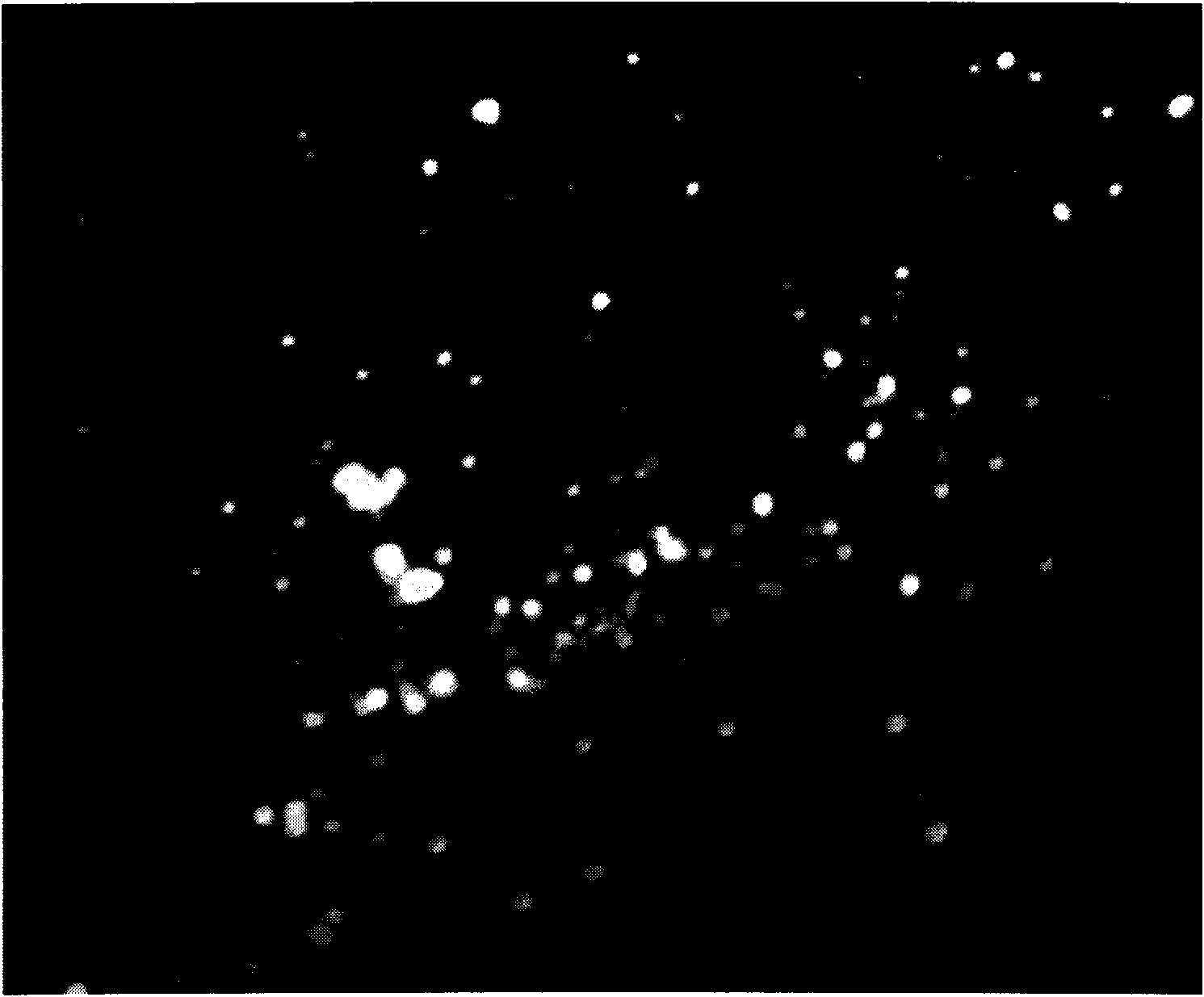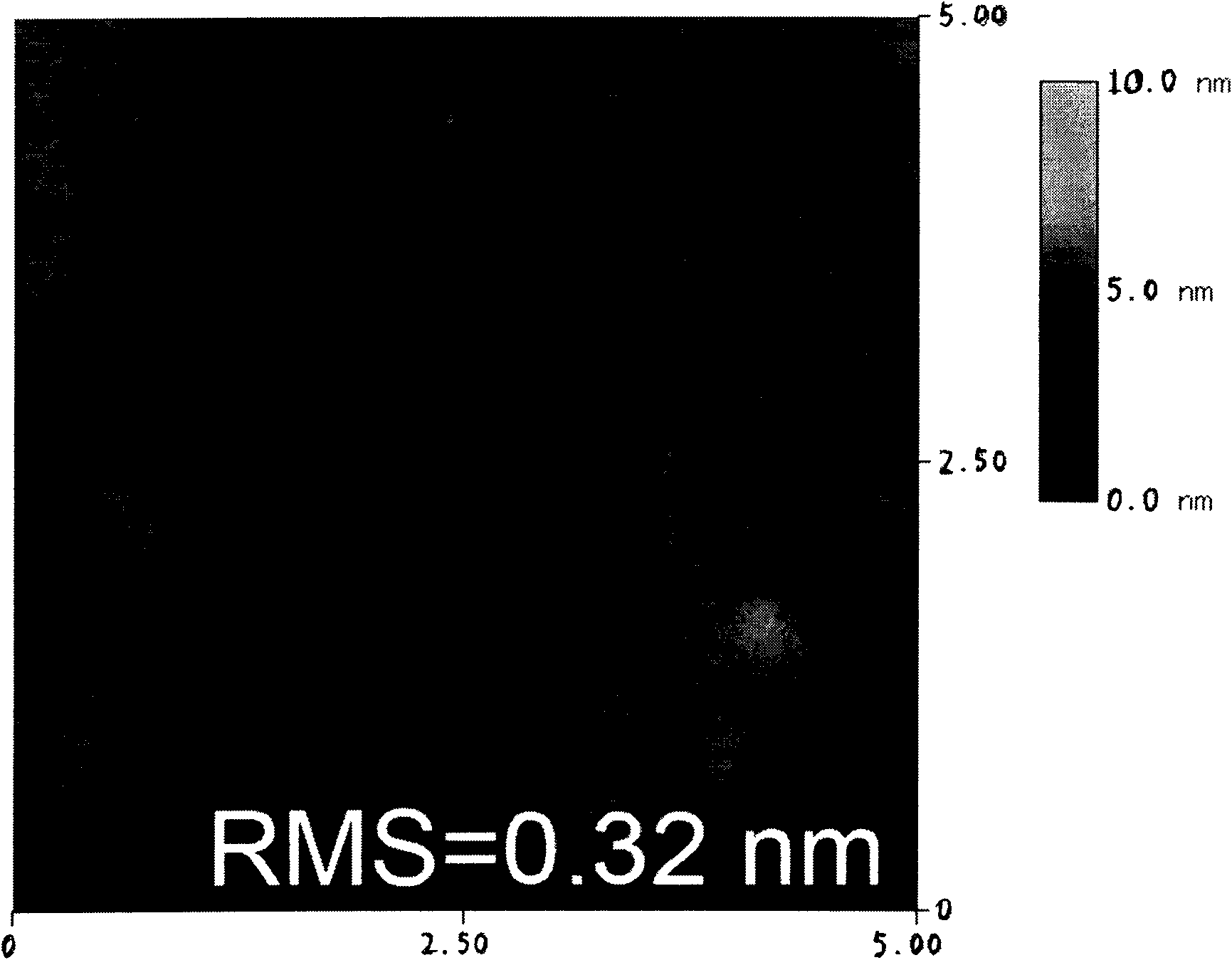Efficient red light electroluminescence material processed by solution using naphthothiadiazole as luminous center
An electroluminescent material, a technology of naphthothiadiazole, applied in the direction of luminescent materials, circuits, electrical components, etc.
- Summary
- Abstract
- Description
- Claims
- Application Information
AI Technical Summary
Problems solved by technology
Method used
Image
Examples
Embodiment 1
[0076] Example 1: Synthesis of red photoluminescent materials with electroactive units
[0077] We only take the synthesis of the compound with the following structure as an example to illustrate the present invention, rather than to limit the present invention. All the synthesis idea or synthesis route of red photoluminescent material, and its preparation into luminescent thin film by solution processing method are all within the scope of the design idea of the present invention.
[0078] synthetic route
[0079]
[0080] 1. Synthesis of 4,7-dichloro-2,1,3-naphthothiadiazole (M1)
[0081] Add 500mg of diaminonaphthalene and 5ml of SOCl into the two-necked bottle 2 , slowly add 0.5ml of pyridine while stirring, raise the temperature to 60°C, reflux for 24 hours, pour the product into water, produce a large amount of precipitate, filter and dissolve in 10ml of DMF, extract three times with water and chloroform, dry, and then evaporate the solvent , to obtain dark orange...
Embodiment 2
[0090] Example 2: Photoluminescent properties of red photoluminescent material TCNzC
[0091] Such as figure 1 The UV-Vis absorption and fluorescence spectra of the red compound TCNzC in dilute tetrahydrofuran solution and spin-coated film are shown. Whether in solution or in film, the UV absorption peaks of TCNzC are at 265nm, 298nm, 332nm, and 505nm, among which the absorption peaks at 265nm and 298nm can be attributed to the characteristic absorption of the carbazole group, and the absorption peak at 332nm can be attributed to The characteristic absorption of the fluorene group, the broad absorption at 505nm is attributed to the characteristic absorption of the 2,1,3-naphthothiadiazole group. In solution, under the excitation of 320nm light, the emission peak of TCNzC is located at 599nm, which is the emission generated by the efficient transfer of the energy of carbazole and fluorene excitons to the naphthothiadiazole unit, which shows that naphthothiadiazole As an excit...
Embodiment 3
[0092] Example 3: Device properties of TCNzC solution processed spin-coated films
[0093] Since TCNzC has a relatively large molecular structure and a relatively large molecular weight (Mw=1512.0), it can be processed by solution spin coating like a polymer, making the preparation of the device more convenient and more conducive to future practical applications. So we dissolved TCNzC in chloroform (20 mg / ml) and spin-coated it on the ITO substrate at 3000 rpm. From image 3 It can be seen that the surface morphology of TCNzC films prepared by spin coating is very smooth, and the square root roughness is only 0.32nm. Such a smooth surface morphology is necessary for organic electroluminescent devices, so we can prepare TCNzC light-emitting thin films by spin coating.
[0094] Since TCNzC can form a uniform and flat film by spin coating, we used a preparation method similar to polymer devices to prepare a device structure of ITO / PEDPT / TCNzC (spin coating film) / TPBi (60nm) / LiF...
PUM
| Property | Measurement | Unit |
|---|---|---|
| Brightness | aaaaa | aaaaa |
| Thickness | aaaaa | aaaaa |
| Maximum brightness | aaaaa | aaaaa |
Abstract
Description
Claims
Application Information
 Login to View More
Login to View More - R&D
- Intellectual Property
- Life Sciences
- Materials
- Tech Scout
- Unparalleled Data Quality
- Higher Quality Content
- 60% Fewer Hallucinations
Browse by: Latest US Patents, China's latest patents, Technical Efficacy Thesaurus, Application Domain, Technology Topic, Popular Technical Reports.
© 2025 PatSnap. All rights reserved.Legal|Privacy policy|Modern Slavery Act Transparency Statement|Sitemap|About US| Contact US: help@patsnap.com



